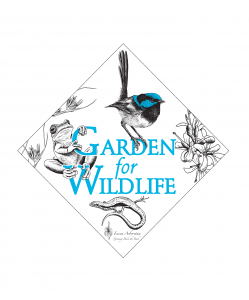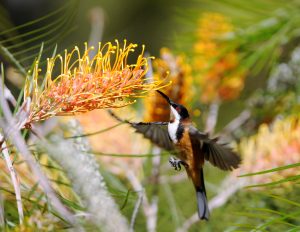 No matter how big or small your garden is, you can make a contribution in providing habitat for native birds and animals.
No matter how big or small your garden is, you can make a contribution in providing habitat for native birds and animals.
Your garden can provide an important stepping stone for birds and other animals to move around the landscape.
‘Gardens for Wildlife’ with APS Mitchell provides support, encouragement and advice to people to help make your garden a friendly place for wildlife to visit and live.

Just one ‘Garden for Wildlife’ can make a difference, but many wildlife-friendly gardens together can provide a much greater area of protection and linkages across the landscape for wildlife to live and move safelyTo create a garden that is friendly to wildlife, here are a few simple tips.
- Plant mostly native and ideally indigenous plants. Indigenous plants are the best adapted to your local soil and climate conditions, requiring minimal watering and are more suited to coping with drought conditions.
- Create clumps of shrubs for small birds to nest. The pricklier the better!
- Plant nectar rich flowers for honeyeaters—try and ensure there are nectar sources year round from various plants.
- Provide a cat safe bird bath near shrubs.
- Create a pond with unpolluted water, some sedges and pond plants, and a deeper, cooler patch of water for frogs and tadpoles.
- Create an area of long tussock grass and daisies for butterflies, skinks and lizards.
- Place some rocks for sunbathing lizards.
- Install nest boxes for bats, possums and gliders if your trees are too young for hollows. It takes about 100 years for a native tree to develop hollows.
If you create the right environment for wildlife, birds, butterflies, skinks, frogs and possums will find you!
Gardens for Wildlife in Mitchell shire is supported by Euroa Arboretum, Mitchell Shire Council and SW Goulburn Landcare
